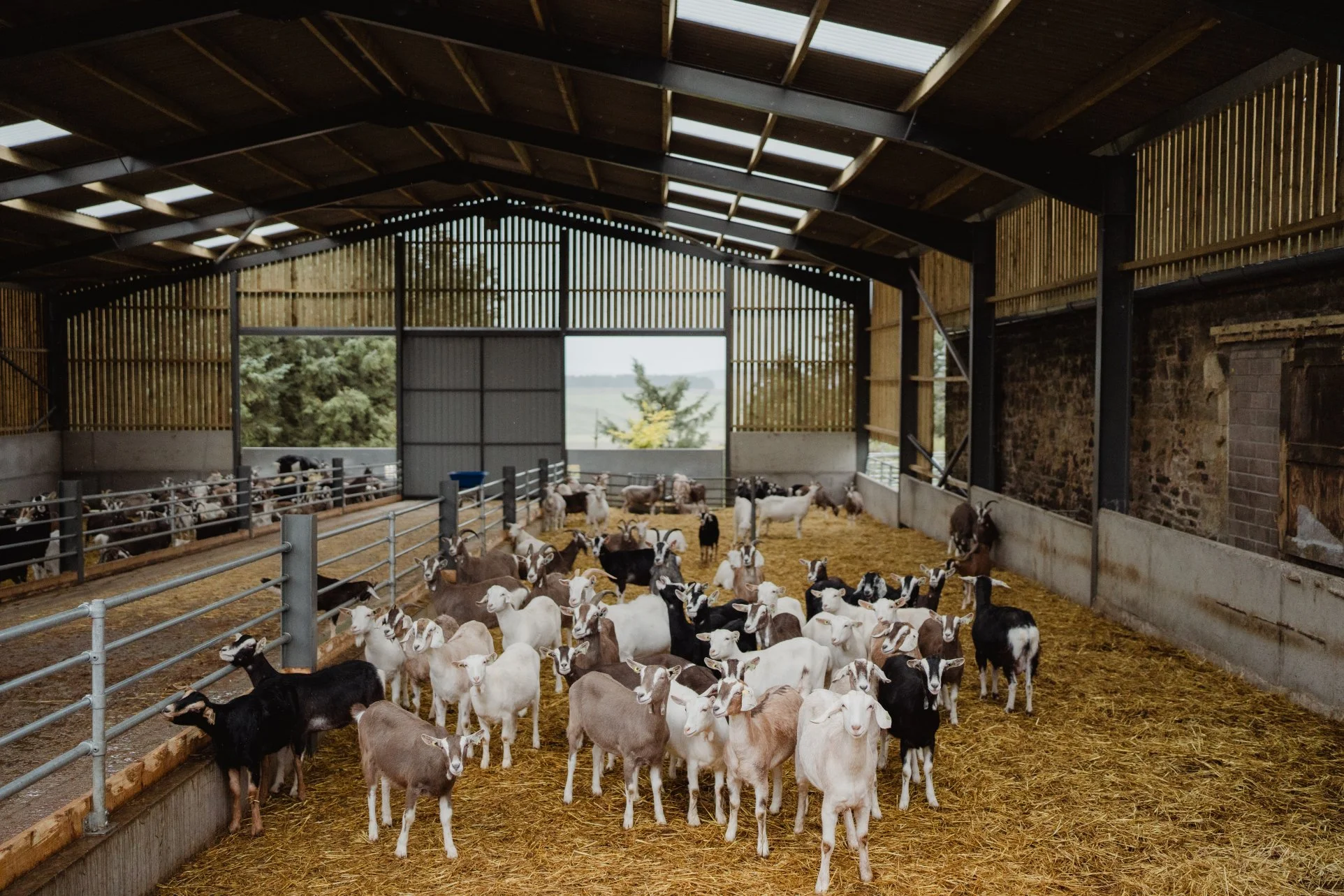
OUR FARM
Located in South Lanarkshire, at the foot of the Pentland Hills, our farm spans 380 acres of mixed grazing, arable land, and woodland. Just 7 miles from Biggar, 25 miles south of Edinburgh, and 30 miles from Glasgow, it sits at 1,000 feet above sea level, making it a unique landscape for farming.
WORKING WITH THE LAND
-
We run a low-input system, avoiding artificial fertilizers and pesticides to keep the land as natural and biodiverse as possible. While we’re not organic, we take an environmentally conscious approach to farming, balancing productivity with sustainability.
-
With a short growing season compared to other areas of the UK, we focus on what thrives here—producing high-quality silage and hay to sustain our livestock. Our farm comprises just under 380 acres of mixed grazing, arable and woodland, with around 40 acres of barley and 100 acres of silage and hay grown on the farm, ensuring that as much as possible is homegrown and sustainable.
-
The farm is powered in part by two 20KW wind turbines, taking advantage of the steady winds that sweep across the landscape. All our fallen timber is used in the biomass system, providing heating and hot water.
DAIRY SHEEP
We keep around 400 dairy Lacaune ewes, a hardy breed from the French mountains that thrives in our altitude and climate. Lambing takes place in January and February, with 325 ewes milked each year from spring through to September.
Their rich, high-fat, low-lactose milk is used to make Lanark Blue, Corra Linn, and occasionally Sir Lancelot, continuing a cheesemaking tradition that has been at the heart of the farm for nearly 40 years.
Throughout the year, the sheep follow a natural cycle—grazing on pasture during the warmer months and coming indoors during winter. Their diet is built on grass, hay, and silage, making them perfectly suited to a farm where grass flourishes.
DAIRY GOATS
In 2019, we introduced 150 dairy goats to the farm to allow for year-round cheesemaking. Sharing the same parlour as the sheep, they’ve become a key part of our cheesemaking process, producing milk for our lactic cheeses—Blackmount and Elrick Log.
Our herd is a mix of breeds, including Saanen, Toggenburg, and British Alpine, and we have crossed them with some Nubian and more recently Golden Gurnsey to try and breed a resilient herd which suits our farm. Unlike sheep, goats lack the natural lanolin protection in their coats, so they spend more time indoors in winter but graze outside on warmer days.
All our sheep and goats are MV/CAE accredited through the Premium Sheep and Goat Health Scheme, and we sell breeding stcontact usock annually. We are also QMS approved. For more information, please contact us by phone or email.
Pigs & Regenerative Farming
The farm has recently welcomed Tamworth and Large Black pigs, native rare breeds that are well-suited to an outdoor, pasture-based system. The pigs play an important role—grazing the land, foraging in the woodlands, and consuming the whey, a natural by-product of the cheesemaking process.
Their presence not only contributes to soil regeneration but also ensures that nothing goes to waste on the farm, reinforcing our commitment to ethical, circular farming practices.

FARM TOURS
For those wanting to explore the farm and learn more about our cheesemaking, farming practices, and the animals that make it all possible, we offer a variety of farm tours.



